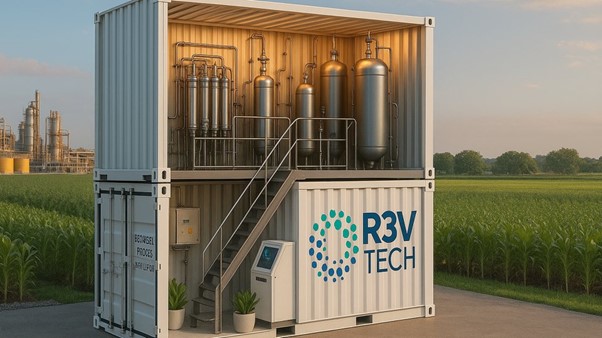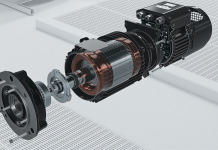Chromium-6, often referred to as Hexavalent Chrome, has long been indispensable to modern industry. While its use continues to face regulatory scrutiny in Europe, with future access under review and limited to ‘essential use’ cases, the UK government has recently granted a 12-year authorisation to a Surface Engineering Association (SEA) Consortium for its continued use in hard chromium electroplating. This decision not only safeguards critical sectors such as manufacturing, aerospace, defence, and nuclear but also reaffirms the UK’s commitment to industrial innovation and responsible regulation.
Despite its critical role in industry, hexavalent chromium is subject to careful regulatory monitoring due to its known health risks. Used widely in chrome plating, stainless steel production, textile dyes, pigments, corrosion inhibitors and leather tanning, the compound is carefully managed through comprehensive safety and environmental standards.
Chrome types and their uses
Two primary forms of chrome are used in industrial applications: trivalent chrome (Chrome-3) and hexavalent chrome (Chrome-6). While Trivalent Chrome is non-toxic, it lacks the adhesion and hardness properties found in Hexavalent Chrome. Once applied, however, Hexavalent Chrome becomes inert, making it essential for heavy engineering applications that demand long-term durability.
Hexavalent Chrome versatility is unmatched. In rolling plants, for example, the journals at the ends of rolls are coated to withstand constant friction and pressure. This prevents premature wear and tear, allowing machinery to operate efficiently for years.
Hexavalent Chrome is mission-critical in components such as pump shafts, turbine parts and structural elements subjected to extreme conditions in sectors such as nuclear power, aerospace and defence. Without it, industries risk operational failures that could compromise both safety and financial performance.
One of the most significant advantages of Hexavalent Chrome is its contribution to cost savings. Instead of manufacturing new components, industries can restore existing parts at a fraction of the cost. For instance, repairing a pump shaft via chrome plating may cost around £3,000, compared to £40,000–£50,000 for a new one. This efficiency is crucial in sectors where downtime can result in losses of millions of pounds.
The economic value of responsible use
Hexavalent Chrome plays a key role in the global plating industry, projected to reach $26.53 billion by 2032. Many sectors, from automotive to aerospace, depend on its unique properties for both functional and aesthetic applications. [Rather than a blanket ban, the UK’s decision enables continued use under rigorous controls, offering industries stability while maintaining safety.]
Removing Hexavalent Chrome without viable alternatives would significantly disrupt production. For example, rolling machinery in manufacturing facilities would face costly redesigns. Parts in power stations—expected to last decades thanks to Hexavalent Chrome—would need premature replacement. Re-engineering these systems across industries would result in substantial investment and delays.
Why substitution remains a challenge
Despite over 70 years of research, no substitute has yet matched Hexavalent Chrome’s performance in terms of durability and adherence. Even if a theoretical replacement were discovered, commercialising it would take years—if not decades.
Industry-specific transition timelines, supported by government policy, help ensure safety, innovation, and industrial continuity. While trivalent chromium is a suitable replacement in decorative contexts, it often fails to deliver the mechanical performance required in aerospace, defence and energy sectors.
Moreover, developing safer alternatives requires extensive research and development (R&D), requalification, and certification, especially in regulated industries. Manufacturers would need to overhaul equipment, update supply chains, and adapt to new compliance standards, all of which require significant resources and time.
Supply chain readiness also plays a role. Many suppliers are not yet prepared to produce Hexavalent Chrome-free coatings at the required scale. In sectors like aviation, rigorous testing is required before any material changes can be implemented. With assets in rail, shipping, and defence lasting decades, replacing Hexavalent Chrome coatings often means re-engineering the entire component, not just switching to a different chemical.
While regulatory agencies globally are evaluating Hexavalent Chrome under frameworks such as EU REACH and U.S. OSHA, extensions have been granted in recognition of the current lack of proven substitutes. Defence industries, citing national security imperatives, have also sought exemptions.
The UK’s approach strikes a balance between industrial needs and safety, enabling industries to plan for the future while meeting their environmental obligations.
A global perspective
Global consistency in regulating hexavalent chromium can help reduce environmental harm more effectively. Inconsistent bans often shift the use of Hexavalent Chrome to countries with less robust environmental standards, weakening global sustainability efforts and eroding competitive advantages for countries with stricter controls.
This is particularly evident in sectors such as automotive manufacturing. Where chrome trims once adorned many Western-produced vehicles, suppliers now often source components from countries with looser environmental standards. Collaborative, harmonised regulation can help prevent these challenges.
Towards responsible regulation
The key is not to eliminate Hexavalent Chrome abruptly but to regulate it responsibly, enforcing strong safety standards while supporting innovation. Realistic timelines and government support for R&D can help industries adapt without risking operational integrity.
Leading companies have already introduced stringent health and safety protocols: air extraction systems, exposure controls, and routine health monitoring for employees are now standard practice. BEP Surface Technologies, for example, recently invested over £500,000 in a major refurbishment project. Electroplating tanks (4,500–15,000 litres) and other equipment were safely removed and upgraded. More than 31,500 litres of hazardous substances were handled in accordance with environmental regulations, with Hexavalent Chrome solutions retained for reuse, thereby reinforcing sustainability goals.
The Health and Safety Executive (HSE) enforces Hexavalent Chrome authorisation in the UK, with companies required to meet strict requirements on emissions control, health monitoring, and safe handling. Non-compliance leads to penalties and regulatory action, ensuring a level playing field for all operators.
Balancing progress and protection
As ESG goals gain traction across the industrial sector, businesses and policymakers must strike a careful balance. Effective regulation can protect both people and the planet, without hampering innovation or economic resilience.
Hexavalent Chrome remains vital to sectors such as aerospace, defence, manufacturing, and packaging. Although a phase-out is the long-term goal, a hasty or excessively rigid approach threatens to disrupt supply chains, compromise safety, and diminish economic competitiveness.
The way forward lies in pragmatic, science-led policies that enable a transition without sacrificing industrial capability. Rather than responding to Chrome-6 with fear or haste, industry and government must continue to collaborate to ensure that innovation, progress, and sustainability are mutually aligned. The 12-year Hexavalent Chrome authorisation would not have been possible without the leadership and coordination of SEA, which collaborated with industry and government to achieve this success.
This exemplifies how collaboration can deliver outcomes that benefit both industry and regulatory progress.











